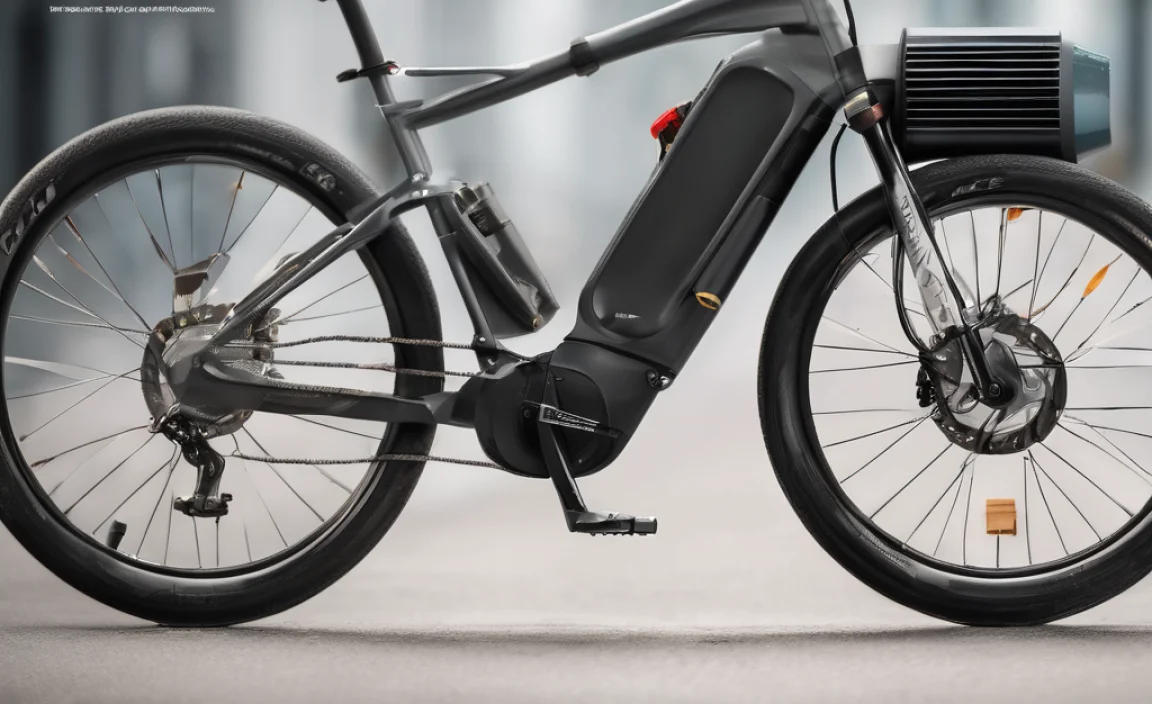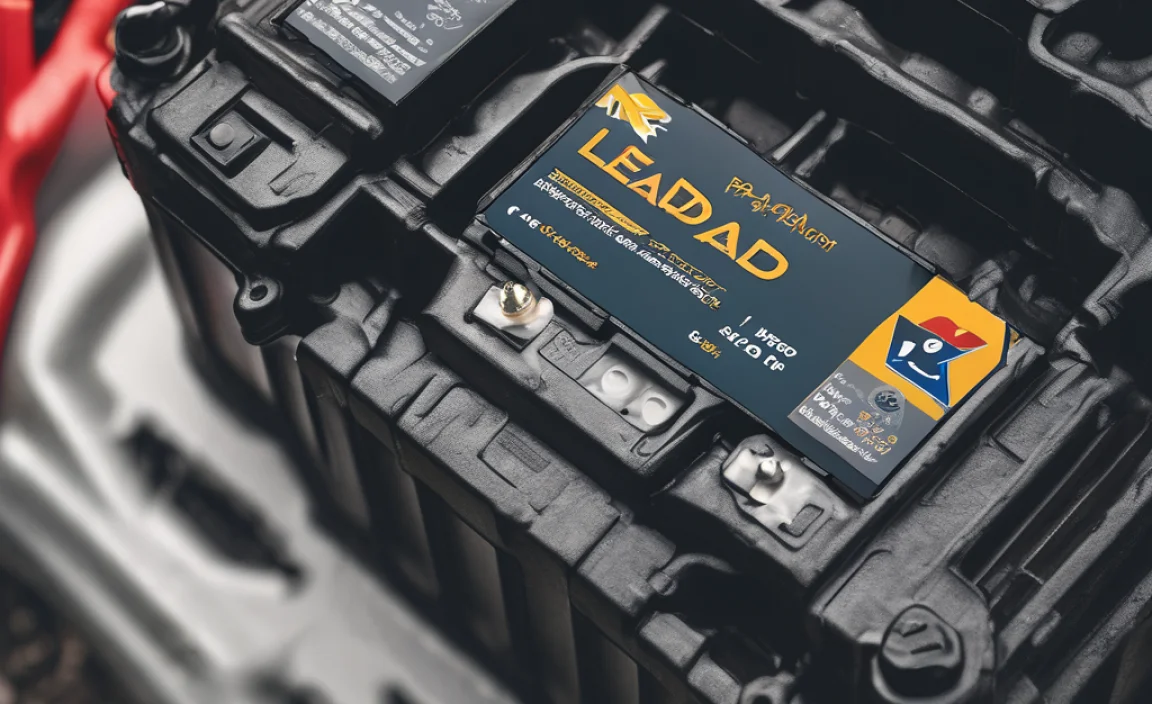Your mobility scooter needs the right charger to stay powered. Finding the correct battery charger for your mobility scooter ensures it runs smoothly, safely, and lasts longer. This guide breaks down everything you need to know, from identifying the right charger to keeping it in top shape.
Mobility scooters are amazing. They give us freedom and independence. But what happens when the battery runs low? A dead battery means a stopped scooter, and that’s frustrating, especially when you’re out and about. The key to keeping your trusty scooter ready is the right battery charger. It might seem like a small detail, but choosing and using the correct charger is super important for your scooter’s performance and its lifespan. This guide is here to make choosing a battery charger for your mobility scooter simple and stress-free. We’ll walk you through what you need to know, step-by-step, so you can get back to enjoying your freedom.
Understanding Mobility Scooter Batteries and Chargers
Before we dive into chargers, let’s quickly talk about the heart of your mobility scooter: its battery. Most mobility scooters use deep-cycle lead-acid batteries, similar to what you might find in a car, but designed for a different kind of work. These batteries are made to be discharged and recharged many times. The charger’s job is to feed power back into the battery safely and efficiently.
Think of your charger as a doctor for your battery. It needs to know exactly how much “medicine” (charge) to give and for how long. Giving too much or too little can cause problems. The wrong type of charger can damage the battery, shorten its life, or even be a safety hazard. That’s why picking the right one is so crucial.
Most modern mobility scooter chargers are “smart chargers.” This means they don’t just pump electricity in constantly. They monitor the battery’s charge level and adjust the charging process. When the battery is full, the smart charger stops or enters a “float” mode to keep it topped up without overcharging. This protects your battery and saves energy.
Key Features to Look For in a Mobility Scooter Charger
When you’re looking for a battery charger for your mobility scooter, a few things matter most. Getting these right means your charger will work perfectly with your scooter.
- Voltage Compatibility: This is the most critical factor. Mobility scooters typically use 12V or 24V systems. Your charger MUST match your scooter’s battery voltage. A 12V charger won’t work on a 24V system, and vice versa. Check your scooter’s manual or battery terminals for this information.
- Amperage Rating (A): This tells you how fast the charger can deliver power. A higher amperage usually means faster charging. However, you don’t want a charger that’s too powerful for your battery. It’s generally best to stick with the amperage recommended by your scooter manufacturer. Too high can damage the battery.
- Connector Type: The plug on the charger needs to fit the charging port on your scooter. There are several common types, like Anderson connectors, barrel connectors, or XLR connectors. Sometimes, you might need an adapter if your new charger has a different plug than your old one.
- Charging Stages: As mentioned, smart chargers are best. Look for chargers with multi-stage charging (e.g., bulk, absorption, float). This helps charge the battery efficiently and prolongs its life.
- Safety Features: Good chargers have built-in safety features like overcharge protection, short-circuit protection, and reverse polarity protection. These prevent damage to both the charger and the scooter.
- Indicator Lights: Most chargers have LED lights that show the charging status (e.g., charging, fully charged, fault). This gives you a quick visual cue.
- Durability and Brand Reputation: Look for well-built chargers from reputable brands. A sturdy charger will last longer and perform more reliably. Reading reviews can be very helpful here.
Identifying the Right Charger for Your Scooter
Finding the correct battery charger for your mobility scooter doesn’t have to be complicated. Here’s a straightforward way to figure it out:
1. Check Your Scooter’s Manual
This is your absolute best resource. The user manual for your mobility scooter will specify the exact voltage, amperage, and connector type recommended for the charger. If you don’t have the physical manual, search online for your scooter’s make and model, followed by “user manual” or “specifications.”
2. Examine Your Existing Charger
If you still have your old charger, it’s a great clue. Look for a label on the charger itself. It should state the output voltage (e.g., “Output: 24V”) and often the amperage (e.g., “Output: 5A”). Also, note the type of connector it uses. This information is key.
3. Inspect Your Scooter’s Battery
You can also often find information directly on the battery. Look for labels indicating voltage (V) and amp-hours (Ah). The voltage is what you need to match with the charger. While Ah tells you the battery’s capacity, it doesn’t directly dictate the charger’s output voltage, but it can help determine the appropriate amperage for a balanced charge rate.
4. Know Your Connector Type
Take a close look at the plug that goes into your scooter. Common types include:
- Anderson Power Products (APP) connectors: These are often color-coded (e.g., gray for battery, blue for charger) and popular in mobility.
- XLR connectors: These look like microphone connectors, usually with 3 or 4 pins.
- Barrel connectors: These are simple round plugs, coming in various sizes.
- Specific proprietary connectors: Some manufacturers use their own unique plug designs.
If you’re unsure, taking a picture of the charging port and the old charger’s plug to a mobility store or an online battery specialist can help immensely.
Types of Mobility Scooter Chargers
While most modern chargers are smart, you might encounter a few different types or variations:
Smart Chargers (Multi-Stage)
These are the gold standard. They use microprocessors to manage the charging process, ensuring the battery gets precisely what it needs without damaging itself. Stages typically include:
- Bulk Charge: Delivers maximum current to quickly bring the battery up to about 80% charged.
- Absorption Charge: Reduces the current as the battery nears full charge, bringing it up to 100% capacity.
- Float Charge: Maintains the battery’s full charge status by delivering a tiny amount of current, preventing self-discharge and keeping the battery ready for use without overcharging.
Standard (or “Dumb”) Chargers
These are older, simpler chargers. They often deliver a constant voltage and current. They lack intelligent monitoring and can easily overcharge a battery if left connected for too long, leading to damage and reduced lifespan. Unless you have a very old scooter or a specific need, steer clear of these.
On-Board vs. Off-Board Chargers
- Off-Board Chargers: These are external units that you plug into a wall socket and then connect to your scooter. This is the most common type.
- On-Board Chargers: Some scooters have the charger built directly into the scooter’s frame. You would then plug the AC power cord directly into the scooter. This is less common and can make replacing the charger more complex.
How to Use Your Mobility Scooter Charger Safely
Safety is paramount when dealing with electricity and batteries. Here’s how to charge your mobility scooter the safe way:
Charging Steps
- Find a Safe Location: Charge your scooter in a well-ventilated area, away from extreme temperatures, moisture, and flammable materials. Garages or indoor spaces are usually fine, but avoid charging in a closed-off closet or on thick carpets that could trap heat.
- Turn Off the Scooter: Always ensure your mobility scooter is turned OFF before plugging in or unplugging the charger. Some manuals specifically state to turn the key to the “off” position.
- Connect the Charger to the Scooter First: Plug the charger’s connector firmly into your scooter’s charging port.
- Plug the Charger into the Wall Outlet: Once connected to the scooter, plug the charger’s AC power cord into a working electrical outlet.
- Check Indicator Lights: Observe the LED indicators on the charger. They will typically show if the unit is receiving power, if the battery is charging, and when charging is complete. Refer to your charger’s manual for specific light meanings.
- Allow Full Charge: Let the charger complete its cycle. Smart chargers will indicate when the battery is full. Avoid interrupting the charging process unless necessary.
- Unplug the Charger from the Wall First: When charging is complete, unplug the charger from the electrical outlet before disconnecting it from the scooter.
- Disconnect from the Scooter: Firmly remove the charger’s connector from your scooter.
Important Safety Tips
- Read the Manuals: Always read and follow the specific instructions in both your mobility scooter’s user manual and your charger’s manual.
- Use the Correct Charger: NEVER use a charger that is not specifically designed for your mobility scooter’s battery system (voltage, amperage, connector).
- Inspect Cables and Connectors: Before each use, check the charger’s cables for any fraying, cracks, or damage. Ensure connectors are clean and not corroded. If damaged, replace the charger immediately.
- Ventilation is Key: Batteries can release small amounts of hydrogen gas during charging, which is flammable. Ensure adequate ventilation to prevent any buildup.
- Avoid Deep Discharges: Try not to let your scooter’s battery drain completely. Charging it regularly, even if not fully depleted, helps extend its lifespan. A good rule of thumb is to charge it after each significant use, or at least overnight if you use it daily.
- Keep it Dry: Water and electronics don’t mix. Keep your charger and charging area dry.
- Don’t Charge in Extreme Temperatures: Very hot or very cold conditions can affect battery performance and charging efficiency.
Troubleshooting Common Charger Issues
Even with the best care, you might run into a problem. Here are some common issues and how to address them:
Charger Not Turning On / No Lights
- Check Power Source: Ensure the wall outlet is working by plugging in another device.
- Check Connections: Make sure the charger is securely plugged into both the wall and the scooter.
- Inspect Cables: Look for any visible damage to the power cord or charging cables.
- Internal Fuse: Some chargers have an internal fuse. If you’re comfortable, you might check this, but it’s often better to contact the manufacturer or a professional.
- Charger Failure: The charger itself might have failed.
Charger Lights Indicate a Problem (Flashing or Red Light)
- Refer to Manual: The specific light pattern usually indicates an error. Consult your charger’s manual to decode the error message.
- Battery Issue: The problem might be with the battery itself (e.g., deeply discharged, damaged, or old).
- Incorrect Charger: Ensure you are using the correct charger for your scooter.
- Faulty Connection: Sometimes, a poor connection can trigger an error. Try reseating the connectors.
Scooter Not Charging or Charging Slowly
- Check All Connections: Loose connections are a common culprit.
- Battery Health: An old or failing battery may not accept a charge effectively.
- Charger Amperage: Is the charger’s amperage too low for the battery size? While it will still charge, it will be very slow.
- Environmental Factors: Extreme temperatures can slow charging.
- Internal Scooter Fault: The charging circuitry within the scooter could be the issue.
Charger Overheats
A little warmth during charging is normal, but if the charger feels excessively hot to the touch:
- Ensure Ventilation: Make sure the charger is not covered or in a confined space.
- Check Battery Condition: A fault in the battery can cause excessive heat during charging.
- Charger Fault: The charger itself may be faulty and could be a safety risk. Discontinue use and contact the manufacturer.
If you’ve gone through these steps and are still having trouble, it’s time to contact the manufacturer of your mobility scooter or charger, or a qualified service technician. Don’t try to force a faulty charger to work or attempt complex repairs yourself, as this could lead to further damage or safety risks.
Battery Maintenance Tips for Longevity
Your charger is only half the story; taking care of the battery itself is just as crucial for a long-lasting power source.
- Charge Regularly: Avoid letting the battery sit in a discharged state for extended periods. Charge it after most uses, or overnight if you use your scooter daily.
- Avoid Overcharging (with Smart Chargers): Modern smart chargers prevent this, but if you have an older charger, be mindful of how long you leave it connected.
- Don’t Deep Discharge: Try to charge the battery before it is completely depleted. Most deep-cycle batteries prefer to stay above 50% charge.
- Keep Terminals Clean: Battery terminals can accumulate corrosion, which impedes electrical flow. Clean them periodically with a wire brush and a solution of baking soda and water. Ensure you disconnect the battery before cleaning.
- Keep Batteries Charged During Storage: If you store your scooter for more than a month, charge the batteries fully before storage and then top them up every couple of months.
- Monitor Battery Age: Lead-acid batteries have a lifespan, typically 3-5 years depending on usage and maintenance. If you notice a significant decrease in range or charging takes much longer than usual, it might be time for new batteries.
When to Replace Your Mobility Scooter Battery Charger
Sometimes, it’s not the battery but the charger that’s the problem. Here are signs it might be time for a replacement:
- Visible Damage: Frayed cords, cracked casings, or damaged connectors mean the charger is unsafe and needs replacing.
- Persistent Error Codes: If your charger consistently shows error lights that troubleshooting can’t resolve, it’s likely failed.
- Battery Not Holding Charge: If your scooter battery still dies quickly even after charging with a suspected good charger, the charger might not be delivering a full charge.
- Slow Charging Issues: If charging times have dramatically increased with no change in battery condition, the charger’s output might be degrading.
- Overheating: Excessive heat during operation is a sign of an internal fault and a potential fire hazard.
- Charger Stops Working Suddenly: If it was working fine and now shows no signs of life, it might have completely failed.
When replacing a charger, always try to get one recommended by your scooter manufacturer or a reputable dealer specializing in mobility equipment. Using an incompatible charger can void warranties and damage your scooter.
Choosing an Authorized Charger: Where to Buy
Purchasing a battery charger for your mobility scooter might seem straightforward, but buying from the right place ensures you get a safe, compatible, and reliable product.
- Mobility Scooter Dealerships: These are often the best place to start. They will stock chargers specifically designed for the brands and models they sell and can offer expert advice.
- Manufacturer Websites: Many scooter manufacturers have their own online stores or parts departments where you can order official replacement chargers.
- Specialty Battery Stores: Online and brick-and-mortar stores that focus on batteries and charging solutions can be excellent resources. They often carry a wide range of smart chargers and can help you match a charger to your scooter if you have all the specifications.
- Reputable Online Retailers: Major online marketplaces (like Amazon or specialized medical supply sites) can offer competitive prices. However, be cautious and ensure you are buying from a trusted seller with good reviews, and verify that the charger is specifically listed as compatible with your scooter model and specifications. Always check the seller’s return policy.
When buying, look for chargers that explicitly state compatibility or match the voltage, amperage, and connector type precisely. For example, a charger might be described as “24V 5A Mobility Scooter Battery Charger with Anderson Connector.” Always prioritize safety and compatibility over just price.
Comparison of Charger Specifications
Here’s a quick table to help visualize key specifications when comparing chargers:
| Feature | Ideal for Most Scooters | Consider If… | Avoid If… |
|---|---|---|---|
| Voltage Output | Matches scooter’s battery system (12V, 24V, 36V, 48V) | – | Does not match scooter’s voltage. |



